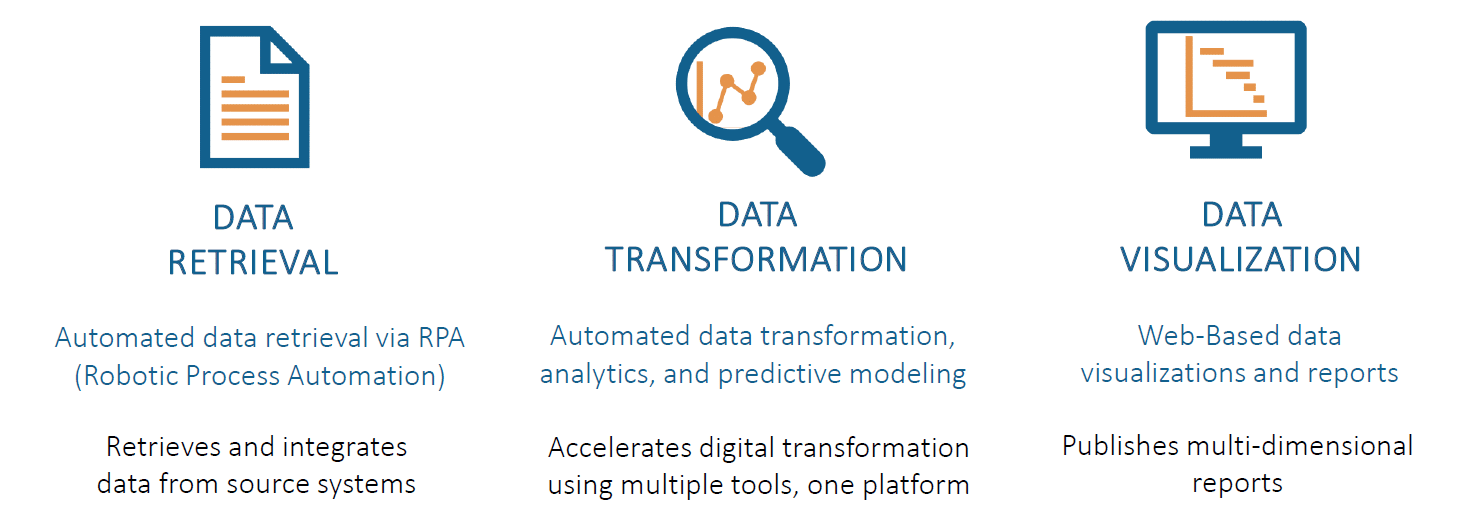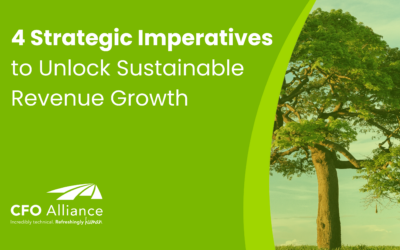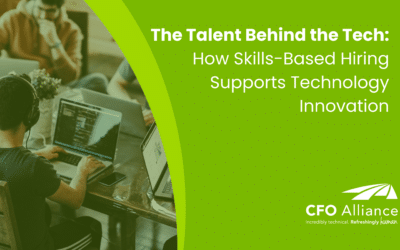Automation, Innovation, & Transformation: Keeping Pace with Technology in the Digital Age
Ever feel like technology is changing faster than you’re able to keep up? Technology innovation is our new way of life, and there’s no time to stop and smell the roses. If you don’t stay on the leading edge of technology, you’ll lose competitive advantage to those who do. Just as the Rolodex gave way to the Blackberry and the Blackberry became obsolete when the iPhone took center stage, today’s technology will be transformed by an oncoming wave of AI innovation that will reimagine the way we do work.
The question facing organizations today is no longer whether they should transform digitally. It’s when, where, and how deeply transformation needs to take place.
Areas to Invest in Technology Transformation
Innovation is about improving speed, efficiency, and accuracy so we can make better business decisions. If we fail to innovate, we introduce risks like errors, stale data, bloated processes, inefficiency, lost productivity, and declining ROI.
Today’s digital tools and solutions solve these challenges by standardizing and automating repetitive tasks so employees can focus on creating strategic value. To stay competitive, keep your finger on the pulse of innovation in these three critical areas
Robotic Process Automation (RPA)
- RPA tools use AI to automate processes like data management, supply chain management, and analytics. With RPA, these tasks require less manual effort to get the same work done, and your best people are free to invest their skills in high-value tasks. Automating these routine, repeatable tasks helps you standardize processes and minimize error, while also empowering you to scale faster.
- For example, Bill.com makes it easier to manage invoices and billing by automating data entry, ACH payment processing, bill approvals and coding, accounts reconciliation, and other key workflows.
Artificial Intelligence (AI)
- We are standing on the brink of an AI revolution. AI tools will soon be as common as the iPhone, and our jobs will change because of it. Within the next five years, AI will significantly alter workflows across many job functions including HR, finance, IT, marketing, and many more.
- ChatGPT is one of the most disruptive examples of AI technology we’ve seen lately. Josh Bersin predicts that we will see a huge influx of innovative technologies that build on the revolutionary capabilities of ChatGPT, and we will see more VC-backed startups building solutions in this space.
- In the finance industry, companies can already use Chat GPT to explain complex financial concepts, write code, analyze economic impacts, and much more.
- For example, try asking ChatGPT to conduct an analysis of Wells Fargo stock. You’ll get a quick summary of financial performance, valuation, dividend yields, regulatory issues and economic outlook within seconds. Of course, this information is limited by ChatGPT’s knowledge cutoff date (September 2021). It has no access to data beyond that date, so it can’t analyze current trends or market conditions. However, it’s something to watch.
Business Intelligence (BI)
- Business intelligence tools leverage data to help you make better decisions, but they don’t necessarily have the power of transformation and automation. They can, however, improve efficiency and help wean you off of manual tools like spreadsheets, which can eat up time and may be prone to error.
- For example, Tableau is an interactive data visualization software that allows users to see and understand data over time. Users can create reports & story-style dashboards from their already existing data.
Integrated Solution
- The above areas can be combined in a fully integrated solution with multiple comprehensive tools for broader application. For example, Atlantix Partners offers a blend of technologies called EdgeVu that covers multiple areas of automation and transformation.
- EdgeVu technology provides data retrieval, transformation, and visualization, all-in-one. Companies can use it to break down data silos and integrate data across disparate systems and complex environments. In the finance department, EdgeVu can help you capture and compare financial and operational data across your organization, streamline analytics and reporting, and increase financial sophistication as you scale.

Building for the Future
Today’s technology will one day look as outdated to us as car phones and iPods. The key to maintaining your competitive advantage will be to stay on the front edge of innovation, invest in technology where it makes sense, and look for opportunities to add value.
Here are 3 things to consider as you plan your technology strategy.
- Resolve friction points.
Where do your employees encounter friction in their workflows? Where do they rely on manual tasks, outdated tools, workarounds, or other inefficient processes? Look for transformation opportunities in these areas to improve speed, quality of data, accuracy, and process efficiency. - Break down data silos.
Does your data reside in multiple systems that can’t talk to each other? Do you have employees who store data offline or in unstructured formats? Invest in systems and processes that break down these silos so you can make better decisions. - Always be innovating.
Technology transformation isn’t a one-and-done activity. It’s something you’ll need to build into your tech strategy as a continual investment. Keeping your finger on the pulse of innovation is one of the most important things you can do to create and maintain competitive advantage. Don’t get left behind!
Ready to upgrade your finance tech stack? We can help! Whether you need to improve a single process, implement a new ERP, or overhaul your technology strategy from the ground up, we equip you with the tools and technology to succeed. Contact us today to start the conversation!
4 Strategic Imperatives to Unlock Sustainable Revenue Growth
4 Strategic Imperatives to Unlock Sustainable Revenue GrowthCreating long-term, sustainable revenue growth takes more...
Future-Proof Your Workforce with a Modern Talent Agenda
Future-Proof Your Workforce with a Modern Talent AgendaWhat does the future of talent look like? It’s a fair question,...
The Talent Behind the Tech: How Skills-Based Hiring Supports Technology Innovation
The Talent Behind the Tech: How Skills-Based Hiring Supports Technology InnovationStaying relevant with technology in...



